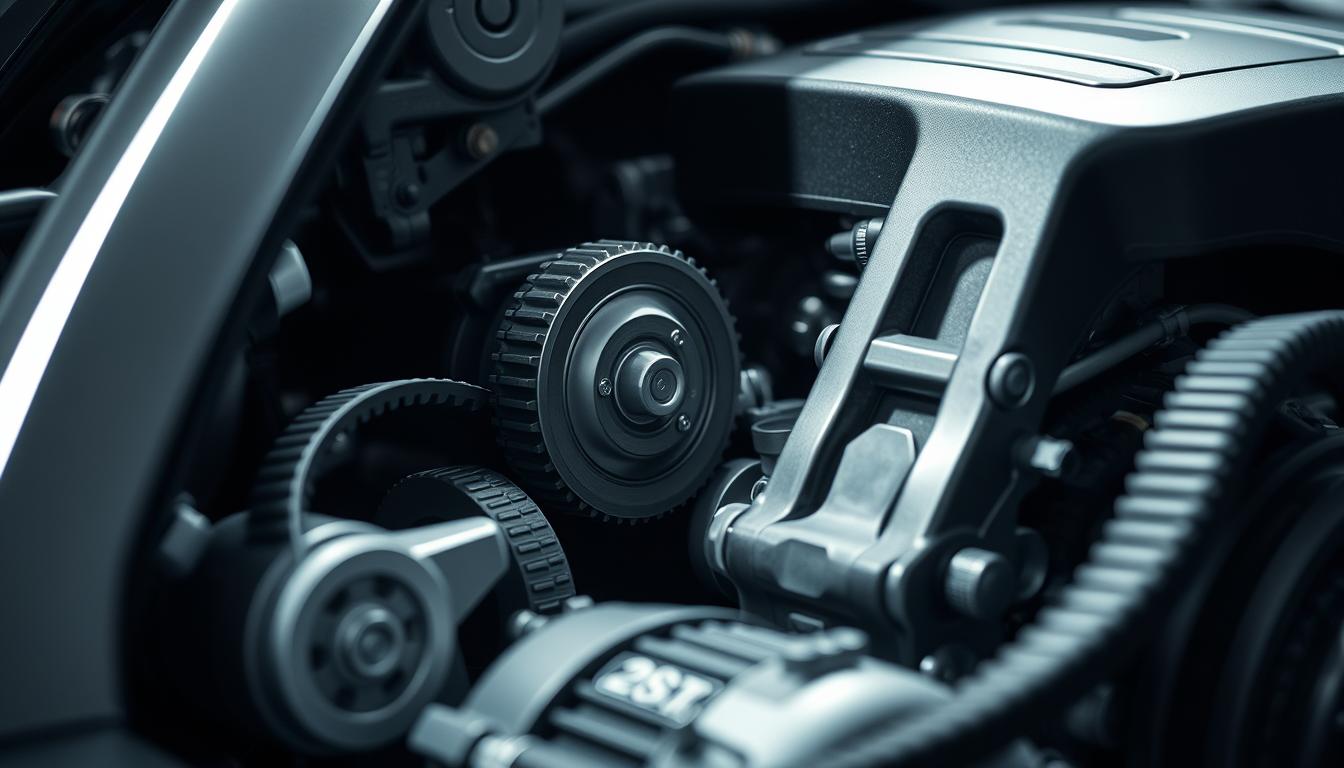At Heaven Automotive, we know how vital it is to keep your car in top shape. A key part of this is the timing belt. It makes sure your engine’s camshaft and crankshaft move in sync.
The mileage interval for changing the timing belt depends on the car maker. It’s usually between 60,000 to 100,000 miles. To find out when it’s time for your car, always check the owner’s manual.
Following this schedule is key to avoid engine problems. We’ll look into why timing belt care is so important. We’ll also talk about how to know when it’s time for a new one.
Key Takeaways
- Check your owner’s manual for the recommended timing belt replacement interval.
- The replacement mileage varies by manufacturer, typically between 60,000 to 100,000 miles.
- Adhering to the recommended schedule is crucial to prevent engine damage.
- Timing belt failure can lead to costly engine repairs.
- Regular maintenance can help extend the life of your vehicle’s engine.
If you’re not sure about your timing belt or need help replacing it, talk to a pro. At Heaven Automotive, we’re here to ensure your car runs well. Contact us today to book your appointment!
Understanding Your Vehicle’s Timing Belt
Knowing how your vehicle’s timing belt works is key to keeping it in good shape. This belt is vital for making sure the engine runs well. It keeps the camshaft and crankshaft in sync.
What Is a Timing Belt and Its Critical Function
A timing belt is a special belt with teeth. It synchronizes the rotation of the camshaft and crankshaft. This ensures the engine’s valves open and close correctly. It’s crucial for avoiding engine damage and keeping the engine running smoothly.
How Long Timing Belts Typically Last
Timing belts usually last between 60,000 to 100,000 miles. But, it’s important to check your owner’s manual or talk to a mechanic. They can tell you when it’s time to replace it. Belt wear can cause serious engine problems if not fixed quickly.

Recent Developments in Timing Belt Technology
New technology has made timing belts stronger and more efficient. Today’s belts can handle the engine’s stress better. This reduces the chance of engine damage. At Heaven Automotive, we keep up with these advancements to give your car the best care.
Not sure about your timing belt? Or need help replacing it? Contact Heaven Automotive. Our team is ready to help. We’re committed to making sure your car runs smoothly for a long time.
Timing Belt Replacement: When and Why
Replacing your vehicle’s timing belt on time is key to avoid engine damage. It keeps the crankshaft and camshaft in sync, making your engine run smoothly.
Manufacturer Recommended Mileage Intervals
Car makers suggest replacing the timing belt between 60,000 to 105,000 miles. Always check your owner’s manual or talk to a mechanic to find out when it’s best for your car.
Visible Signs of Belt Wear to Watch For
Look for cracks, frays, or material detachment on your timing belt. These signs mean it’s almost time for a new one. 
Warning Sounds and Performance Changes
Worn-out timing belts can make your engine misfire or squeal. If starting your car is hard, it might be a sign of a problem. These issues need quick attention to prevent engine damage.
At Heaven Automotive, we believe in taking care of your car before it’s too late. If your timing belt needs replacing or you’re hearing strange noises, call us. Our skilled mechanics are ready to help keep your car running well.
Conclusion: Protecting Your Investment
Knowing when to replace your timing belt is key to keeping your vehicle in top shape. Following the manufacturer’s schedule and watching for signs of wear can save your engine. This way, your car will run smoothly and last longer.
Replacing the timing belt is a big job that keeps your engine safe. If it’s time for a new belt or if you notice any problems, our experts at Heaven Automotive are ready to assist. They have the skills to handle the job.
Choose Heaven Automotive for your vehicle’s maintenance. We ensure your car is fixed right, protecting your investment. Our team will make sure your timing belt is in good condition, keeping you safe on the road.

